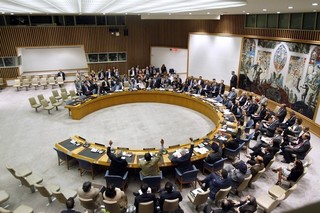What exactly is the United Nations and, for that matter, why is there still a United Nations at all? How has it managed to survive over time, from 1945 down to the present—given its long record of underperformance, frequent outright failure, and even more frequent irrelevance?
On the United Nations’ core issues—collective peace and security, development, and universal human values and rights—its record is mediocre, unless one counts sheer institutional persistence as enough. And that record is particularly poor concerning the issue from which the collective sprang in 1945: international peace and security through the collective itself. Why, then, has not the ruthless evolutionary logic of history pruned it as a failed institutional sapling in a relentlessly competitive forest, as the League was pruned?
The textbooks in international law and organizations provide one set of answers to account for the persistence of the United Nations. They tell us the heroic story of the United Nations’ founding in 1945 and the first meetings in San Francisco; Eleanor Roosevelt et al. They tell us about the efforts of the Second World War Allies to create an organization that would be able to establish true collective security and avoid the fatal—and predictable—errors of international organizations that yielded, among other things, the failed League of Nations and the naïve Kellogg-Briand Pact. They describe the present-day organization as an attempt to provide global governance in a recalcitrant world. They tend, above all, to tell a progressive moral history—“Whig history”—of advances toward greater and better international order through international law and organizations.
Read Full Article »



